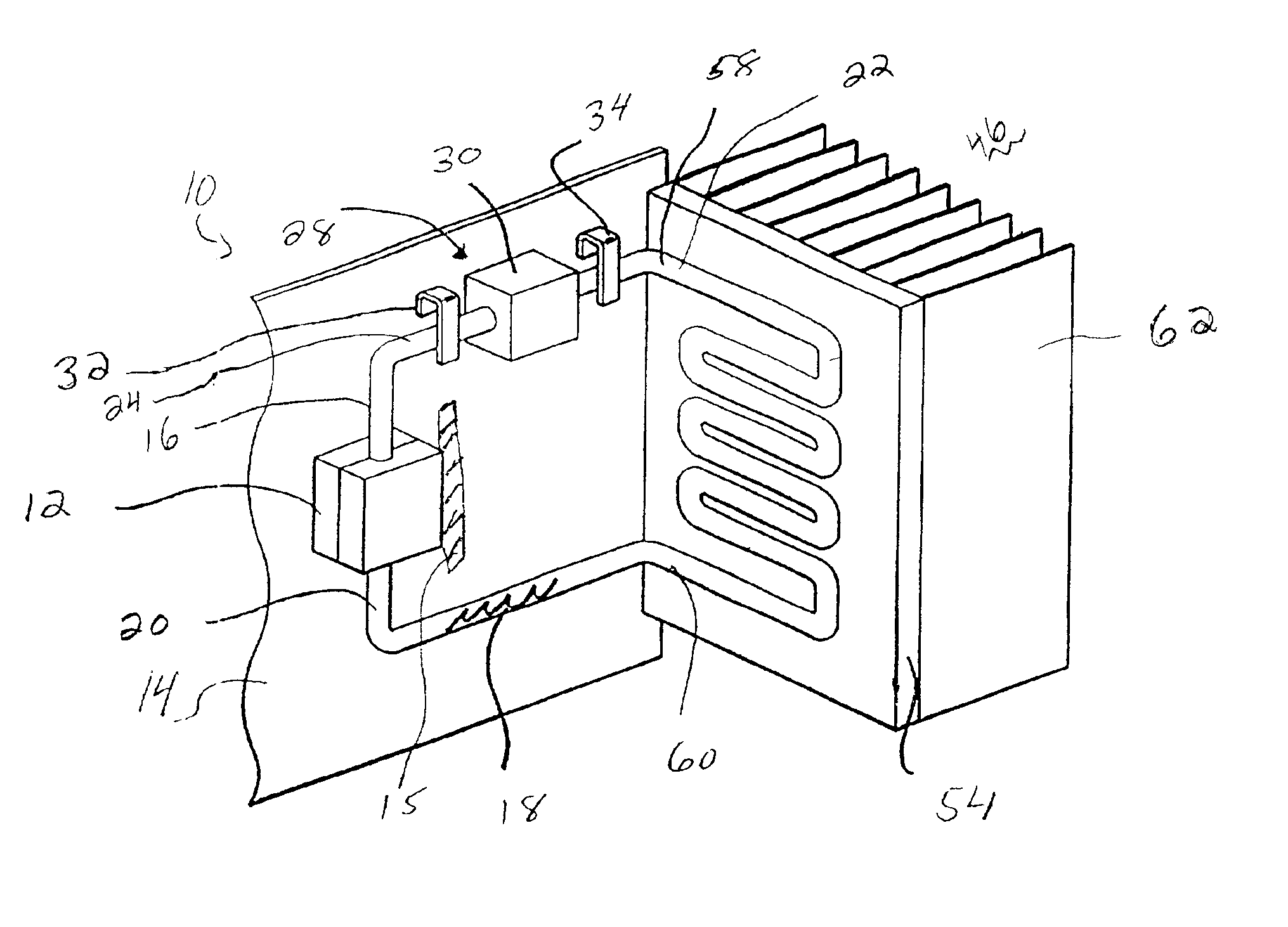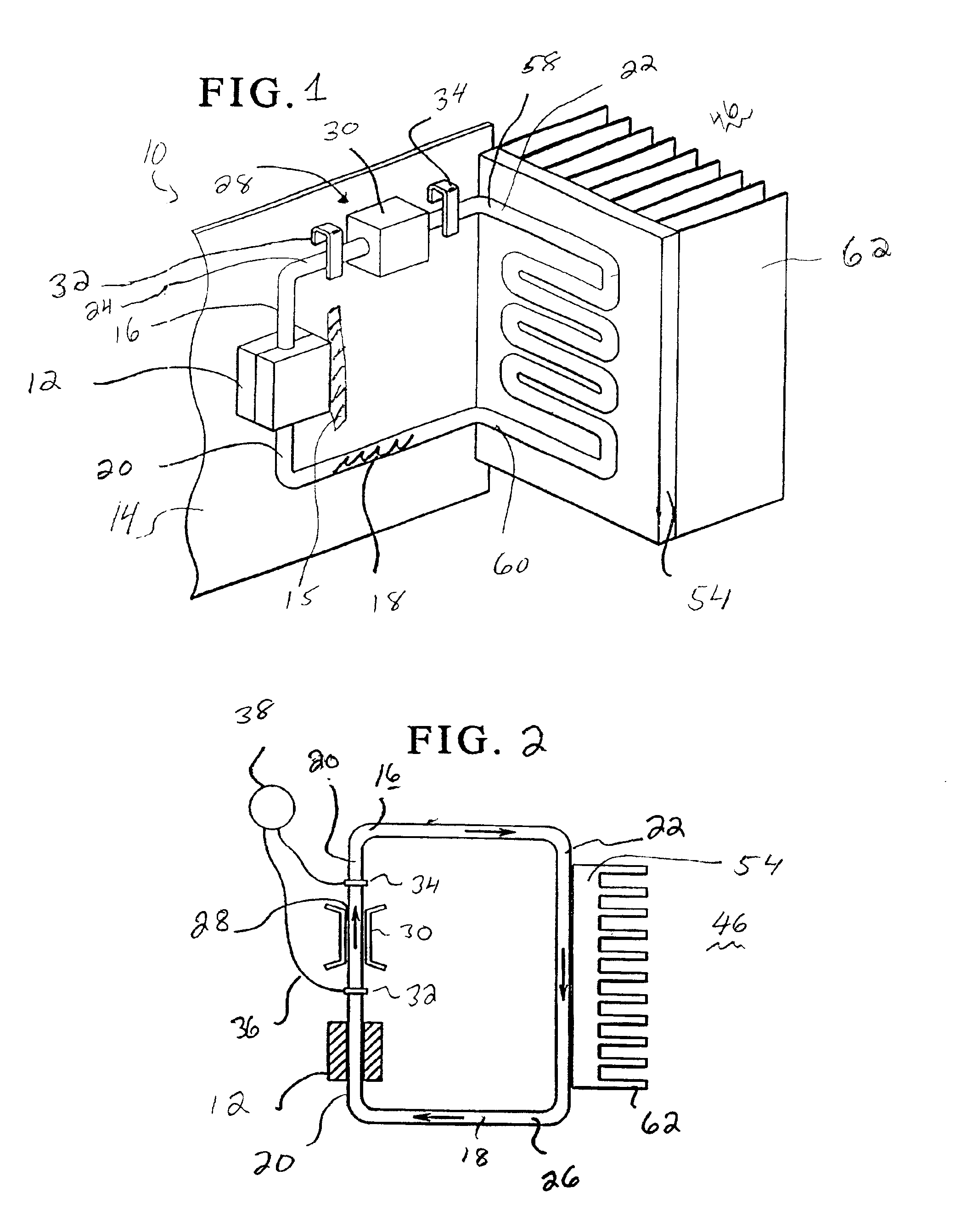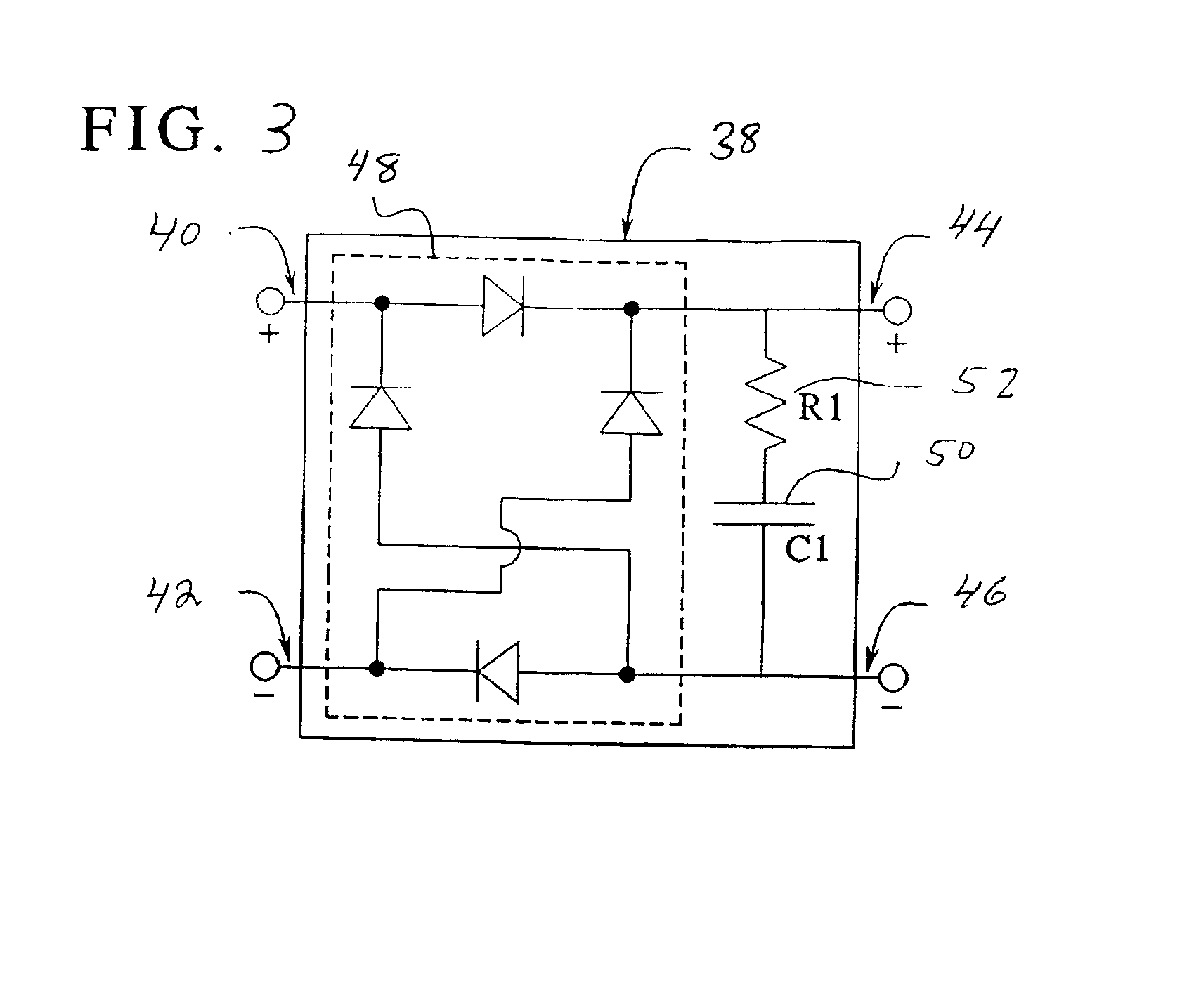Method and apparatus for converting dissipated heat to work energy
a technology of work energy and heat dissipation, which is applied in the direction of electrical apparatus casings/cabinets/drawers, instruments, and semiconductor/solid-state device details, etc., can solve the problems of consuming electrical power, requiring maintenance, and adding components to the system
- Summary
- Abstract
- Description
- Claims
- Application Information
AI Technical Summary
Benefits of technology
Problems solved by technology
Method used
Image
Examples
Embodiment Construction
As discussed above, there is provided an apparatus and method for efficiently transferring unconverted or remaining waste heat away from a heat source, such as an electrical component, and for converting waste heat from the heat source into other forms of energy such as work energy.
The present invention is directed to converting waste heat for energy conversion in a 75° C.-150° C. temperature range into other useful energy. As mentioned above and described more fully below, in accordance with principles of the invention, power is derived from waste heat via an energy converter producing approximately 1W-10W yet only occupying several cm3 of volume. Thus, the present invention can generate power derived from the waste heat for output for operating other devices for cooling purposes (such as a fan or a miniature refrigerator), extending battery life, re-charging depleted batteries, and reducing the electricity demand on the power grid in the office or home.
FIG. 1 illustrates in perspe...
PUM
 Login to View More
Login to View More Abstract
Description
Claims
Application Information
 Login to View More
Login to View More - R&D
- Intellectual Property
- Life Sciences
- Materials
- Tech Scout
- Unparalleled Data Quality
- Higher Quality Content
- 60% Fewer Hallucinations
Browse by: Latest US Patents, China's latest patents, Technical Efficacy Thesaurus, Application Domain, Technology Topic, Popular Technical Reports.
© 2025 PatSnap. All rights reserved.Legal|Privacy policy|Modern Slavery Act Transparency Statement|Sitemap|About US| Contact US: help@patsnap.com



